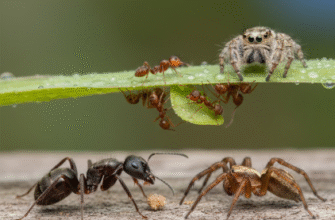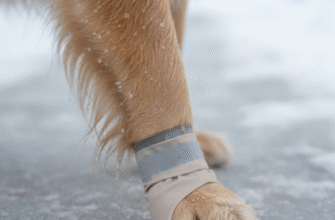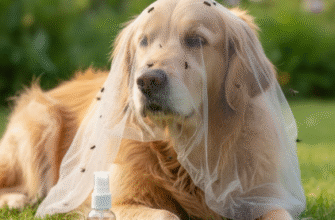Summer sunshine, long evenings, barbecues, and time spent outdoors – it’s what many of us look forward to all year. But alongside the joys of warmer weather comes an unwelcome crowd: biting and stinging insects. Mosquitoes whining in your ear, a sudden sharp pain from a wasp, or the unsettling discovery of a tick can quickly put a damper on outdoor fun. Thankfully, with a little planning and awareness, you can significantly reduce your chances of unpleasant encounters with these critters.
Understanding the Usual Suspects
Knowing your potential adversaries helps in avoiding them. Common summer insects that bite or sting include:
- Mosquitoes: Attracted to carbon dioxide, body heat, and certain scents. They breed in stagnant water.
- Bees (Honeybees, Bumblebees): Generally docile unless provoked or defending their hive. Honeybees typically sting once and die, leaving their stinger behind. Bumblebees can sting multiple times.
- Wasps (Yellow Jackets, Hornets, Paper Wasps): Can be more aggressive than bees, especially yellow jackets near food sources. They can sting multiple times.
- Ticks: Not insects, but arachnids. They don’t fly or jump but wait on vegetation and latch onto passing hosts (people or animals). They often bite in warm, moist areas like armpits, groins, or scalps.
- Biting Flies (Horse Flies, Deer Flies): Deliver painful bites, often persistent in their attacks.
- Chiggers: Tiny mites found in grassy, brushy areas. Their bites cause intense itching.
- Fire Ants: Build mounds primarily in southern regions. Their stings cause burning pain and pustules.
Your First Line of Defense: Personal Protection
What you wear and apply to your skin can make a big difference in deterring insects.
Clothing Choices Matter
Think coverage and color. Long sleeves, long pants, socks, and closed-toe shoes create a physical barrier between your skin and insects. This is especially important during dawn and dusk when mosquitoes are most active, or when venturing into wooded or grassy areas where ticks reside. Tuck your pants into your socks for extra protection against ticks crawling up your legs.
Light-colored clothing is generally less attractive to many insects, particularly mosquitoes and wasps, compared to dark or vibrant floral patterns. Avoid dressing like a flower if you don’t want bees checking you out!
Using Insect Repellents Wisely
Insect repellents are an effective tool, but they need to be used correctly. Look for products suitable for the types of insects you’re trying to avoid and the duration of protection needed. Always read and follow the manufacturer’s instructions carefully.
Apply repellent only to exposed skin and/or clothing – never under clothes. Avoid applying it to cuts, wounds, or irritated skin. When applying to your face, spray it onto your hands first and then rub it on, avoiding your eyes and mouth. Use just enough to cover exposed areas; heavier application doesn’t mean better protection. Remember to wash treated skin with soap and water when you return indoors.
For children, check the product label for age restrictions. Apply repellent to your own hands first and then put it on the child. Avoid applying it to a child’s hands, eyes, or mouth, as they might ingest it. Using repellents containing permethrin on clothing and gear (tents, sleeping bags) can offer longer-lasting protection, especially against ticks, but never apply permethrin directly to skin.
Situational Awareness: Avoiding High-Risk Areas and Times
Paying attention to your surroundings and timing your outdoor activities can significantly lower your risk of bites and stings.
Know Where Insects Hang Out
Mosquitoes love standing water – even small amounts in flowerpots, birdbaths, or clogged gutters can become breeding grounds. Try to avoid lingering near these areas, especially during peak activity times.
Ticks prefer wooded, brushy, or tall grassy areas. Stick to the center of trails when hiking and avoid walking through dense vegetation.
Bees and wasps often build nests in trees, shrubs, under eaves, in attics, or even in the ground (like yellow jackets). Be observant before settling down for a picnic or doing yard work. If you see nests, keep your distance and consider professional removal if they pose a significant threat.
Be mindful around trash cans, recycling bins, and picnic areas, as food and sugary drinks attract wasps and flies.
Timing is Everything
Many mosquito species are most active at dawn and dusk. If possible, limit your outdoor activities during these peak biting times or ensure you’re well-protected if you must be out.
Bees and wasps are generally most active during the warmest parts of the day when they are foraging.
Making Your Yard Less Welcoming
You can take steps to make your own backyard less attractive to biting and stinging pests.
Eliminate Standing Water
This is crucial for mosquito control. Regularly empty or change water in birdbaths, pet bowls, flowerpot saucers, wading pools, and wheelbarrows. Clean out gutters to ensure proper drainage. Cover trash cans tightly. Fix leaky outdoor faucets.
Maintain Your Landscape
Keep your lawn mowed and trim shrubs and overgrown vegetation. This reduces hiding places for ticks and other insects. Remove leaf litter and debris where pests might congregate.
Manage Food and Waste
Keep food covered when eating outdoors. Clean up spills promptly, especially sugary drinks or fruits. Ensure garbage cans have tight-fitting lids and are kept away from gathering areas.
Consider Barriers and Traps
Ensure window and door screens are in good repair to keep insects out of your home. While citronella candles, torches, or bug zappers might offer some limited, localized relief, they are generally not highly effective over large areas or against all types of insects. Some traps specifically designed for certain insects like wasps or mosquitoes might help reduce local populations.
Dealing with Bites and Stings (General Comfort Measures)
Even with the best precautions, bites and stings can happen. Knowing basic steps can help manage discomfort.
For most common bites (mosquito, fly):
- Wash the area gently with soap and water.
- Apply a cold compress or ice pack (wrapped in a thin cloth) for 10-15 minutes at a time to reduce swelling and itching.
- Try not to scratch, as this can break the skin and increase the risk of infection.
For bee stings:
- If the stinger is visible, try to remove it quickly by scraping sideways with a fingernail or a credit card edge. Avoid squeezing the stinger with tweezers, as this can inject more venom.
- Wash the area and apply a cold compress.
For tick bites:
- Prompt removal is key. Use fine-tipped tweezers to grasp the tick as close to the skin’s surface as possible. Pull upward with steady, even pressure. Avoid twisting or jerking.
- After removing the tick, thoroughly clean the bite area and your hands with rubbing alcohol or soap and water.
- Dispose of the live tick by putting it in alcohol, placing it in a sealed bag/container, wrapping it tightly in tape, or flushing it down the toilet.
Important: While most insect bites and stings cause only minor, temporary discomfort, some people have severe allergic reactions (anaphylaxis) requiring immediate medical attention. Watch for symptoms like difficulty breathing, swelling of the face/throat/lips/tongue, dizziness, rapid heartbeat, hives spreading across the body, or nausea. If these occur, seek emergency medical help right away. Also, consult a healthcare provider if you develop a rash (especially a bull’s-eye pattern around a tick bite), fever, body aches, or other concerning symptoms following a bite or sting.
Protecting Children and Pets
Little ones and furry friends also need protection.
For Kids:
Always supervise the application of repellent. Dress them in protective clothing when playing in high-risk areas. Check them thoroughly for ticks after playing outside, especially in hair, behind ears, behind knees, and in armpits. Teach older children basic avoidance strategies, like not disturbing bee or wasp nests.
For Pets:
Talk to your veterinarian about appropriate flea and tick prevention products for your pets. These are crucial as pets can bring ticks into the home. Check pets for ticks regularly, especially after they’ve been outdoors in grassy or wooded areas. Be aware that some insect repellents meant for humans can be toxic to pets.
Enjoying Summer Safely
Pesky insects are a part of summer, but they don’t have to ruin your enjoyment of the outdoors. By taking sensible precautions – dressing appropriately, using repellents correctly, being aware of your surroundings, and making your yard less inviting – you can greatly minimize your chances of painful bites and stings. Stay vigilant, perform regular checks for ticks, and know when simple discomfort might signal something more serious. A little prevention goes a long way towards ensuring a safe and happy summer season.








